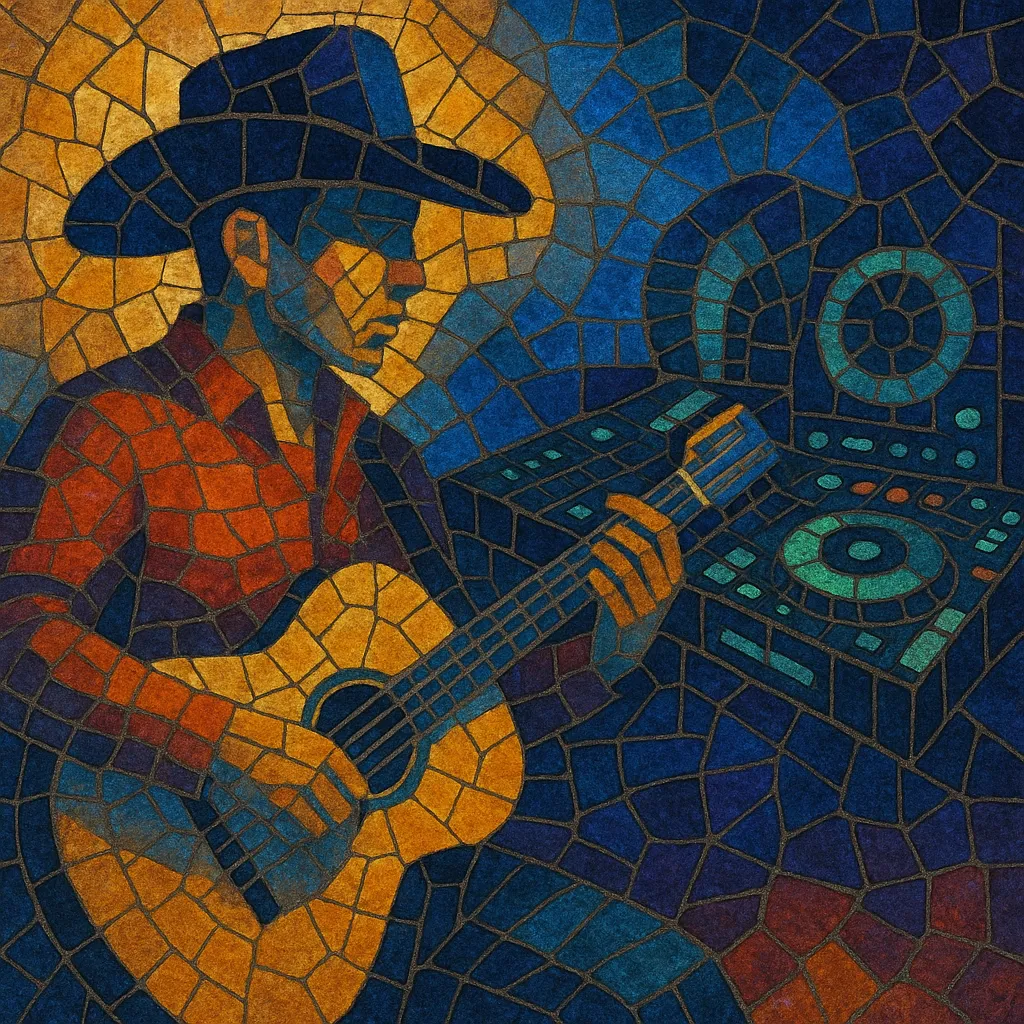Electro corridos (often styled as electrocorridos, electro bélico, or house belicón) fuse the narrative songwriting, vocal delivery, and melodic motifs of Mexican corridos with modern electronic dance production.
Hallmarks include four-on-the-floor or syncopated club drums, sidechained bass lines that mirror traditional tuba/tololoche figures, bright synth leads echoing requinto/accordion riffs, and drop-focused arrangements. While lyrics retain corridos’ storytelling—romance, street life, hustle, regional pride—the sound is engineered for clubs and festivals, sitting at the crossroads of Regional Mexicano and EDM/house culture.
Electro corridos emerged in the early–mid 2020s as DJs and producers began pairing corrido vocals and motifs with club-oriented electronic beats. The idea had long-running roots: the borderlands tradition of corridos, norteño, and banda met electronic experimentation in the 2000s via Tijuana’s Nortec Collective, while 2010s tribal guarachero (3BallMTY) mainstreamed the notion of blending regional Mexican rhythms with dance-floor sonics.
The late 2010s rise of corridos tumbados (and later corridos bélicos) brought corrido storytelling to younger, streaming-native audiences. As those songs crossed into global charts, club remixes proliferated on TikTok, YouTube, and DJ sets, nudging producers toward fully original electro corrido tracks. High-profile Latin and global EDM producers began experimenting with corrido timbres—tuba-like bass hooks, requinto motifs, and banda-style stabs—inside house/EDM frameworks.
Electro corridos keep the vocal focus and Spanish-language narrative of classic corridos but reframe them with 4/4 kicks (~122–130 BPM for house-leaning cuts) or half-time/trap-inflected grooves (~95–110 BPM). Arrangements add risers, drops, and heavy sidechain, translating the energy of banda/norteño brasses and bass into modern club textures. The style has found a home in DJ culture, Latin clubs, and festival sets, circulating through remix culture and collabs between regional Mexican acts and electronic producers.
As a fluid, internet-driven movement, electro corridos continues to evolve through bootlegs, official remixes, and cross-genre collaborations. Its visibility reflects the broader globalization of Regional Mexicano—now not only on radio and playlists but also in club and festival ecosystems powered by electronic music.


